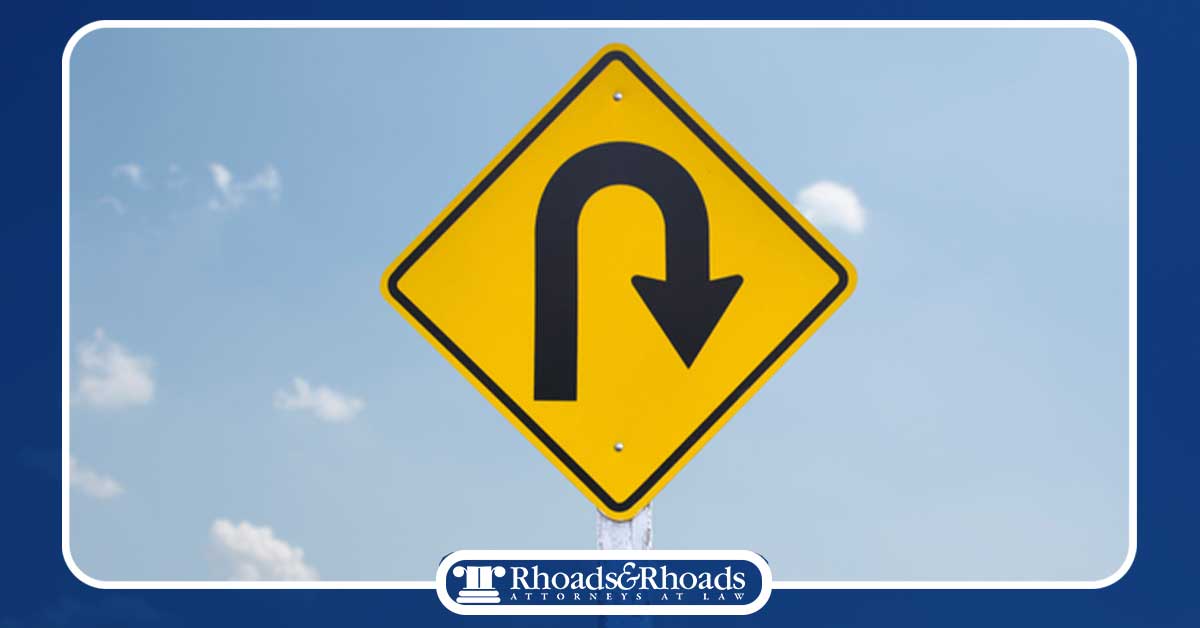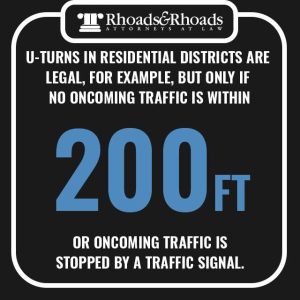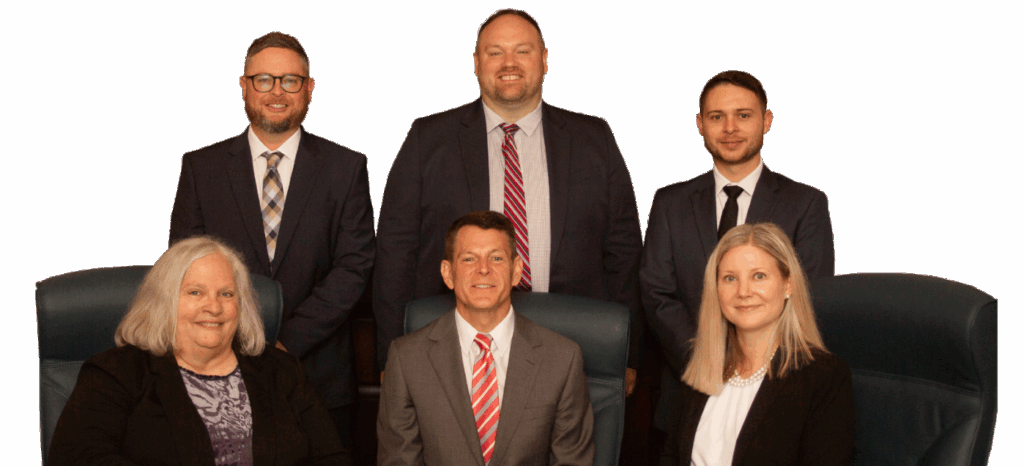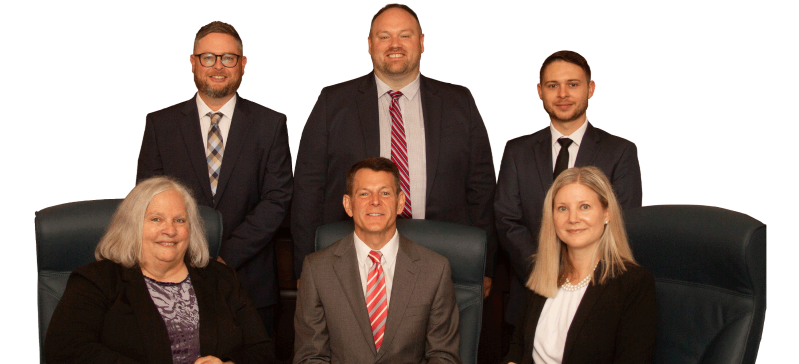
Key Points in this article:
- U-turns, in certain circumstances, can be legal in Kentucky if made safely and under certain conditions, but not in prohibited areas.
- Fault in a U-turn accident depends on the cause and legality of the U-turn, and Kentucky follows pure comparative fault.
- Multiple drivers can share fault in a U-turn accident, with compensation adjusted based on the percentage of fault.
Generally speaking, U-turns are often considered a risky maneuver. A U-turn on a road that is congested with traffic, for example, can easily result in an accident. That said, there are situations where U-turns are legal and some situations when they are illegal. Determining who is at fault for a U-turn will depend on whether the U-turn was the direct cause of the accident and whether or not the U-turn was made legally.
If you are injured in a U-turn accident and need help filing your claim and determining fault, our experienced Kentucky car accident attorneys can assist you. At Rhoads & Rhoads, we have been helping injured car accident victims in Western Kentucky for over 50 years. Contact us today for assistance with your case.
Are U-Turns Legal in Kentucky?

Yes, U-turns can be legal in Kentucky, but it depends on the situation and where you are making the turn. U-turns in residential districts many times are legal, for example, but only if no oncoming traffic is within 200 feet or oncoming traffic is stopped by a traffic signal.
According to Kentucky legislation, “the operator of any vehicle shall not turn such vehicle so as to proceed in the opposite direction unless such movement can be made in safety without interfering with other traffic.”
This typically means that a U-turn can be made at any intersection as long as it is safe to do so and there are no signs stating that U-turns are prohibited. However, there are certain situations when a U-turn is considerably highly unsafe and it is illegal or highly advised against doing so. These include:
- On a divided highway where no opening is provided.
- On or near railroad tracks.
- If you do not have a clear line of vision to ensure the road is clear to make the turn.
- Anywhere a “No U-turn” sign is posted.
- In business districts.
Why Are U-Turns So Dangerous?
If there is minimal traffic and performing a U-turn would not obstruct anyone’s path and can be done so easily, then there is generally no harm. The problem is that many people who make U-turns do so when the roads are not clear.
For example, many people will underestimate how much time they have to make the turn before oncoming traffic reaches them. Some people even underestimate how much space and clearance they have to make a U-turn. For example, if you attempt to make a U-turn but cannot complete the turn in one easy maneuver, meaning you have to reverse and turn again, this could result in you taking too long, and you could end up blocking oncoming traffic.
If there are cars parked on the opposite side of the road, you could also end up sideswiping them if you do not have enough space to make the U-turn. Plus, a U-turn can result in a chain reaction if you do not make the turn fast enough, and multiple oncoming vehicles end up crashing into you and one another.
U Turn Accident: Who’s at Fault?
Determining fault for a U-turn will depend on the cause of the accident and if the U-turn was made legally. If the U-turn was the direct cause of the accident, then it is likely that the driver making the U-turn will be held liable. However, it is also possible that another driver’s actions could have contributed to the accident, such as speeding or distracted driving.
For example, if you make a U-turn at an intersection where it is allowed but were hit because an oncoming driver was speeding or distracted by their mobile phone, then the oncoming driver will likely end up being the one at fault. It is also possible in situations like this that both drivers could be held liable.
Kentucky is a pure comparative fault state. This means that more than one driver can be at fault, and each driver can file a claim to recover damages. This considered, if you made a U-turn but didn’t turn fast enough and the driver that hit you was speeding, you both might be held liable. In this case, when you file your claim, the compensation you recover will be reduced based on your percentage of fault.
For example, if the fault is split 50/50 and you were initially awarded $10,000 in damages, you would only get $5,000 since you were 50% at fault. Understandably, this can seem unfair in some situations and could mean that you don’t end up getting enough money to cover all of your accident-related expenses.
This is why working with a lawyer is often necessary in U-turn accident cases. Your lawyer can carefully review the evidence and build a strong case to ensure you are not held unfairly responsible for the accident.
Kentucky U-Turn Accident Lawyers – Rhoads & Rhoads
Our team at Rhoads & Rhoads has experience handling complex accident claims, such as those involving U-turn accidents. We are dedicated to helping injured victims receive the guidance and help they need to win their cases.
Call us at 888-709-9329 to schedule an appointment with one of our Madisonville or Owensboro personal injury attorneys. We offer free initial consultations, and all cases are taken on a contingency fee basis, so no initial payment is required. We get paid only if we win or settle your case, so there is NO RISK involved.


